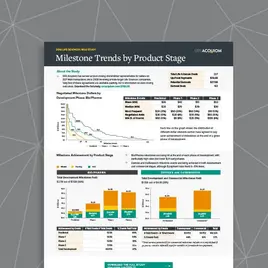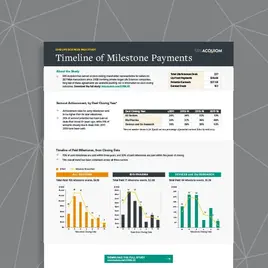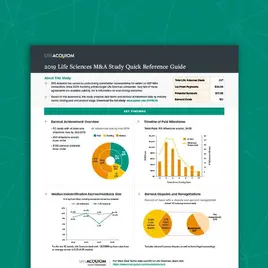Format

Deal Terms Analysis
Life Sciences
Bio/Pharma M&A: Earnout Achievement Insights

Life Sciences
Life Sciences M&A: Are You Prepared for Post-Closing Challenges?

Life Sciences
2023 Life Sciences M&A Earnout Achievement: Key Findings by Industry Sector

Deal Terms Analysis
Life Sciences
2023 SRS Acquiom Life Sciences M&A Study

Life Sciences
Life Sciences M&A: The Midyear Pulse

Life Sciences
Life Sciences M&A in 2023: Protecting Your Next Deal

Life Sciences
Top M&A Milestones: The COVID Impact

Life Sciences
Life Sciences M&A in a Pandemic World

Deal Terms Analysis
Life Sciences
2021 Life Sciences M&A Study

Life Sciences
Shareholder Representation
How to Structure Earnouts in M&A

Life Sciences
Shareholder Representation
A Review of Earnouts in M&A Transactions

Life Sciences
How COVID-19 is Impacting Life Sciences M&A Post-Close

Deal Terms Analysis
Life Sciences
Life Sciences: Milestone Trends by Product Stage

Deal Terms Analysis
Life Sciences
Life Sciences: Timeline of Milestone Payments

Deal Terms Analysis
Life Sciences
2019 Life Sciences Study Quick Reference Guide

Deal Terms Analysis
Life Sciences
2019 Life Sciences M&A Study